TEN YEARS AGO TODAY! MXA’S 2014 YAMAHA YZ250 TWO-STROKE TEST
Q: FIRST AND FOREMOST, IS THE 2014 YAMAHA YZ250 BETTER THAN THE 2013 YZ250?
A: Let’s be serious for a second. The MXA wrecking crew tests bikes. We don’t build bikes; we just race them. And we have been testing the almost identical Yamaha YZ250 two-stroke for the last nine years. If we re-ran last year’s YZ250 test, it would still be accurate today. Heck, if we ran a 2008 Yamaha YZ250 test, it would still be accurate. So, why are we testing the 2014 Yamaha YZ250? That’s simple! We love this bike, and although it may not be changed from 2013, it still deserves its day in the sun—not for those who already know how good it is, but for those who don’t.
Q: WHAT DID YAMAHA CHANGE ON THE YZ250 FOR 2014?
A: You don’t have to be a history buff to know that the major difference between the 2013 Yamaha YZ250 and 2014 YZ250 is the graphics. We can’t exactly call them Bold New Graphics (BNG), but Yamaha has changed the tank logo enough for them to be called MNG (Mild New Graphics). The long awaited plastic changes will come with the 2015 model.
Q: WHAT HAS YAMAHA CHANGED ON THE YZ250 SINCE 2006?
A: When you start looking at the big picture (groups of years instead of individual years), the YZ250 two-stroke has undergone a series of changes since this generation of the venerable YZ250 came online in 2006. Here are the biggest mods of the last nine years.
SSS suspension. Introduced in 2006, Kayaba’s Speed Sensitive System (SSS) is still the best production suspension on the track. There is nothing old-fashioned about the 2014 YZ250’s suspension components.
N3EW needle. It’s no secret that YZ250s ping if you hop them up, add a pipe, run cruddy gas or the temperatures get hot. In 2007, Yamaha installed the N3EW needle that most hardcore racers had been using in 2006. The N3EW needle delivered a big improvement in bottom-end and midrange response from the 38mm Keihin PWK carburetor. It will still ping if you push it.
Removable bar mounts. Prior to 2008, the bar mounts were cast into the top triple clamp.
Global spec. The 2011 YZ250 got the 75mm-longer Euro-spec silencer, and the compression ratio was reduced from 10.9:1 to 10.6:1 (by increasing the volume of the combustion chamber by 0.5cc). These were implemented to allow one model of YZ250 to be sold worldwide. Before 2011, there were three different YZ models coming off the assembly line, with jetting specs, suspension settings, mufflers and cylinder head compression chosen for local Japanese, European and American tastes, fuel availability and sound regulations.
Borrowed parts. Over the years Yamaha’s engineers have gifted the YZ250 with parts from the Yamaha YZ250F four-stroke. These include the rear brake caliper (2006), oversized handlebars (2007), smaller front-brake caliper and wave-style rotors (2008), and last but not least, a much smaller aluminum front-brake hose clamp (2009).
Q: DOES THE 2014 YAMAHA YZ250 HANDLE BETTER THAN THE 2014 KTM 250SX?
A: The Yamaha YZ250 only has one serious competitor—the KTM 250SX. It is logical to compare the two most popular two-strokes. So does the YZ250 handle better than the KTM 250SX? No. The Austrians, with the help of their American test team, have produced a sweet-handling chromoly steel chassis. It tracks straight, carves without hesitation and doesn’t suffer from understeer. The Yamaha isn’t a bad-handling bike, but it is a little more reluctant to do all the things the KTM does without asking. However, without suspension work the 2014 KTM doesn’t always show its handling pedigree.
Q: IS THE YAMAHA YZ250 BETTER SUSPENDED THAN THE KTM 250SX?
A: Yes, indeed. Nothing, and we mean nothing, is as well-suspended as a Kayaba SSS-equipped Yamaha. SSS is the acronym for “Speed Sensitive System,” which means that the damping is determined by the speed at which the piston moves through the cartridge rod, not its position in the stroke of the fork. Kayaba SSS forks are 90 percent speed sensitive, whereas their position-sensitive competition is only 30 percent speed sensitive. The suspension on the KTM 250SX is a hot mess. The 48mm WP forks are lacking in mid-speed damping on both compression and rebound, which makes them feel harsh.
Q: IS THE 2014 YAMAHA YZ250 LESS EXPENSIVE THAN THE KTM 250SX?
A: Yes. The KTM 250SX ($7290) is $140 more expensive than the YZ250 ($7150). The fly in the ointment of both of these bikes is that they sell out fast—not necessarily because there is an overwhelming demand for them, but because the production numbers are low. Thus, demand always exceeds supply.
Q: HOW DOES THE 2014 YAMAHA YZ250 COMPARE TO THE 2014 KTM 250SX?
A: Here are the winners and losers in the two-bike, two-stroke, Austria-versus-Japan shootout.
Horsepower? KTM. On the dyno, the stock 2014 KTM pumps out 49.77 horsepower, while the YZ250 peaks at 47.10. That 2.67-horsepower difference is noticeable.
Handling? KTM. A few years ago every MXA test rider would have chosen the YZ250 to take the handling cake. No more! The KTM handles better than the YZ.
Weight? KTM. Both the 250SX and YZ250 are very light compared to the four-strokes they race against. At 216 and 218 pounds respectively, the scales favor the orange bike.
Suspension. Yamaha. The YZ250 comes with Kayaba SSS suspension, and it is the best in the biz. The KTM’s WP forks and shock are very busy.
Brakes. KTM. There isn’t a Japanese-made bike that can compete with the 260mm Brembo front brake on the KTM.
Clutch. KTM. The Yamaha’s clutch is workmanlike, but it can’t compete with KTM’s Belleville washer-equipped, hydraulically actuated, Damped Diaphragm Steel (DDS) clutch.
Cosmetics. KTM. The Austrians have been updating the look of their two-stroke hand in hand with their four-strokes; thus the 2014 KTM 250SX looks identical to the KTM 450SXF. On the other hand, the YZ250 look has nothing in common with the latest-generation Yamaha four-strokes. It resembles a vintage bike.
Q: WHAT ARE THE BEST MODS FOR THE 2014 YAMAHA YZ250 TWO-STROKE?
A: If you are made of money, here are seven mods you should consider for your YZ250.
(1) Gearing. Every MXA test rider adds one tooth to the YZ250’s rear sprocket. The goal is to gear it down to get to third gear sooner. The lower gearing makes the bike accelerate quicker.
(2) Jetting. Although the YZ250 is finely jetted for its box-stock configuration, if you port it, raise the compression, add an aftermarket exhaust or try to skimp on fuel quality, it will ping. Play it safe and go rich. The safest strategy is to add 1 gallon of VP C-12 to every 5 gallons of premix.
(3) Front brake. The stock front rotor is too small. Go to an oversized 260mm or 270mm rotor.
(4) Clutch. We run stiffer clutch springs.
(5) Exhaust pipe. You can gain 2 horsepower with an FMF or Pro Circuit pipe. Although you might think that this will help close the gap with the more powerful KTM 250SX, that is only true if the KTM rider doesn’t install an FMF or Pro Circuit pipe.
(6) Reeds. As a rule of thumb, MXA test riders who like more midrange choose Moto Tassinari reeds and those looking for more top end go with Boyesen.
(7) Flywheel weight. Although local hotshots will tell you that flywheel weights are for enduro riders, virtually every factory Yamaha YZ250 rider ran a flywheel weight on his works bike. We run a 9-ounce Steahly weight, but Steahly makes lighter weights also.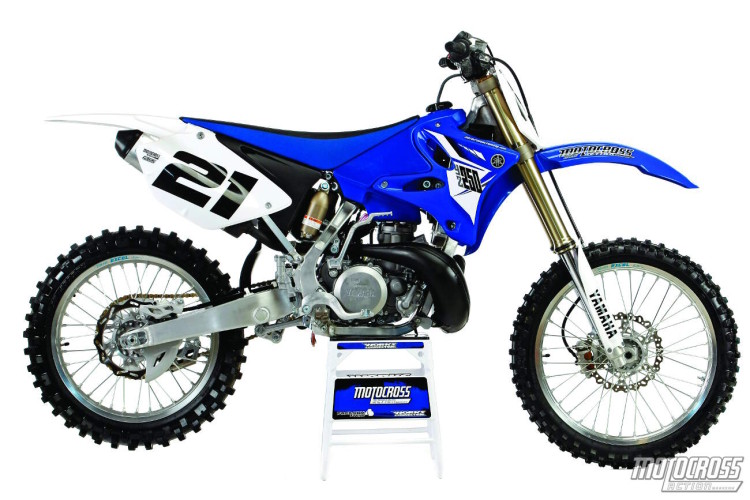
Q: WHAT DID WE HATE?
A: The hate list:
(1) Cosmetics. The plastic on the YZ250 is old—very old. Luckily, UFO makes a complete plastics kit for the YZ250 that makes it look identical to the 2013 YZ250F. And, the 2015 YZ125 and YZ250 will get a cosmetic update, plus a new airbox, to make them look more like a YZ250F.
Q: WHAT DID WE LIKE?
A: The like list:
(1) Maintenance. Anybody with a modicum of mechanical skill can keep a YZ250 two-stroke running.
(2) Suspension. You gotta love Yamaha’s SSS suspension. It is almost perfect right off the showroom floor.
(3) Parts. Even if the YZ250 parts cost the same as their four-stroke nephews (which they don’t), there are a lot less of them to buy. The MXA wrecking crew doesn’t believe that two-strokes are more reliable than four-strokes, only that when unreliability rears its ugly head, a two-stroke owner spends less dough on pistons, rings and gaskets—and can put them in himself.
(4) Perfection. Even though the MXA wrecking crew is critical of Yamaha’s marketing of the YZ250, we love the fact that this bike is nearly perfect. Over its long nine-year development span, all of the bugs have been ironed out. When it rolls off the showroom floor, it is ready to go.
Q: WHAT DO WE REALLY THINK?
A: If we were in the market for a bulletproof 250cc two-stroke, we’d look at the Yamaha YZ250 first—okay, maybe we’d look at a used YZ250 first. This bike, save for its plastic, is refined to the nth degree.
MXA’S 2014 YAMAHA YZ250 SETUP SPECS
This is how we set up our Yamaha YZ250 for racing. We offer it as a guide to help you find your own sweet spot.
KAYABA SSS FORK SETTINGS
For hardcore racing, we ran this setup on the 2014 Yamaha YZ250 (stock clickers are in parentheses):
Spring rate: 0.43 kg/mm
Oil height: 330cc
Compression: 13 clicks out
Rebound: 14 clicks out
Fork-leg height: 5mm up
Notes: These are awesome forks, made all the more terrific by the light feel and snappy input of the two-stroke engine. Obviously, if you are fast or fat, you might want to go stiffer on the fork springs. Typically, however, fast riders can dial in more compression (and use the crossover effect of rebound damping to get the stock fork springs to work).
KAYABA SSS SHOCK SETTINGS
For hardcore racing, we ran this setup on the 2014 Yamaha YZ250 (stock clickers are in parentheses):
Spring rate: 4.7 kg/mm
Race sag: 100mm
Hi-compression: 1-3/4 turns out (1-1/2 turns out)
Lo-compression: 8 clicks out (13 clicks out)
Rebound: 8 clicks out (12 clicks out)
Notes: The one thing that the KTM 250SX can’t touch on the YZ250 is its suspension. Compared to what comes on the 250SX, the YZ250 has a works shock. It comes with a jumbo-sized 18mm shock shaft, Kashima-coated internals and SSS damping. AMA National-speed riders and heavyweight contenders will need to move up to a 5.0 kg/mm spring.
YAMAHA YZ250 JETTING
Here are MXA’s recommended jetting specs (when changed, stock specs are in parentheses):
Main: 178
Pilot: 50
Needle: N3EW
Clip: 2nd from top
Air screw: 1 turn
Notes: The 2014 YZ250 jetting is on the edge, albeit the good side of the edge. If you hop-up the YZ250 or add an aftermarket exhaust pipe, you will need to go to a bigger 180 or 182 main. Other than that, the YZ250 jetting is basic, simple and effective. The air screw is very sensitive from 1/2 turn to 1 turn out.



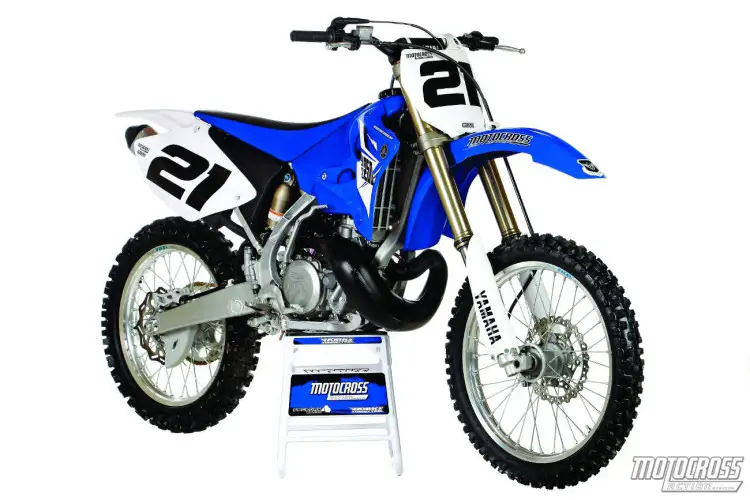
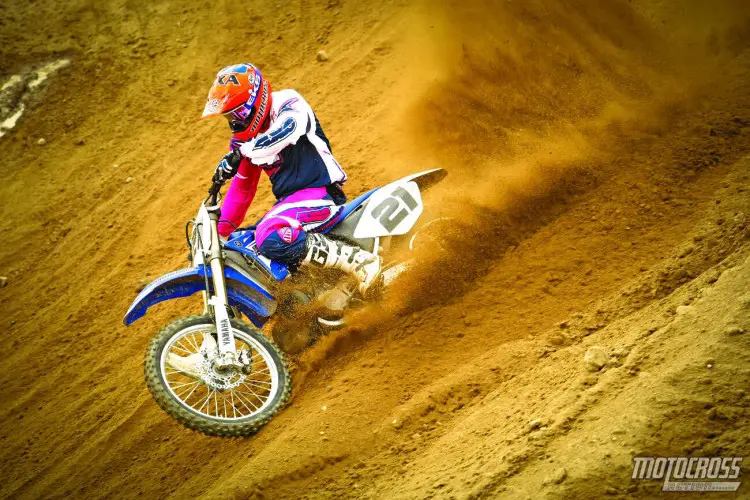
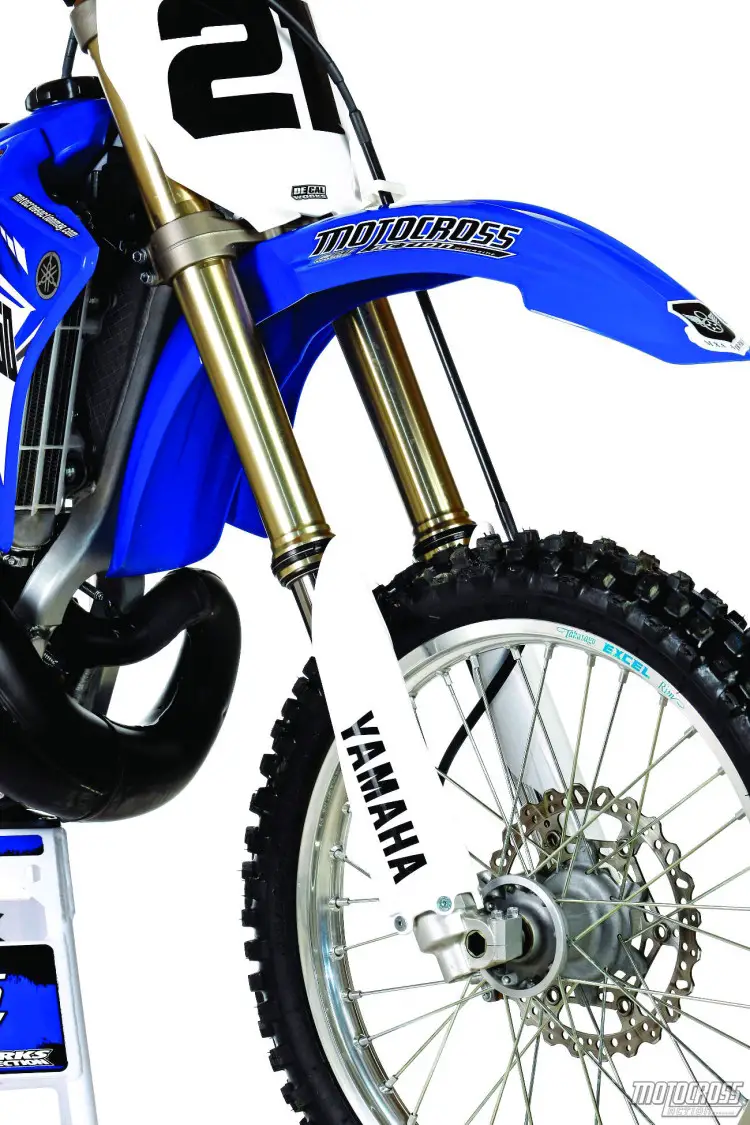
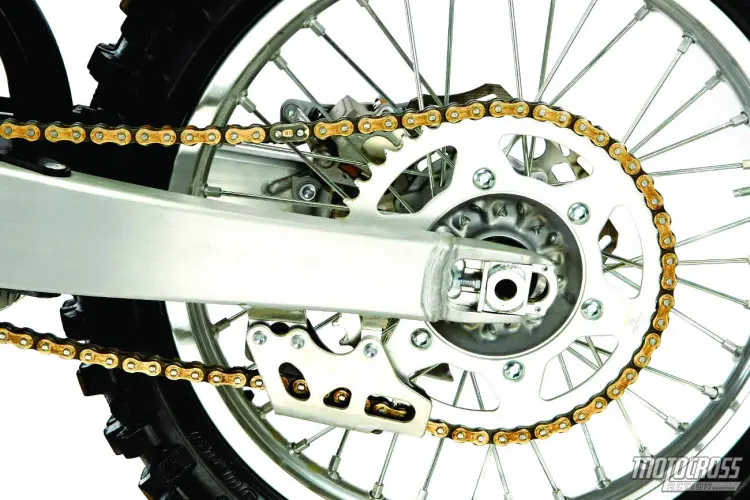
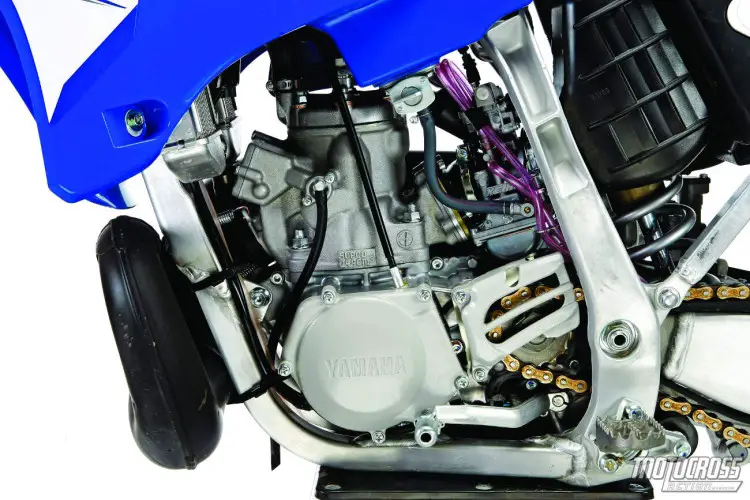
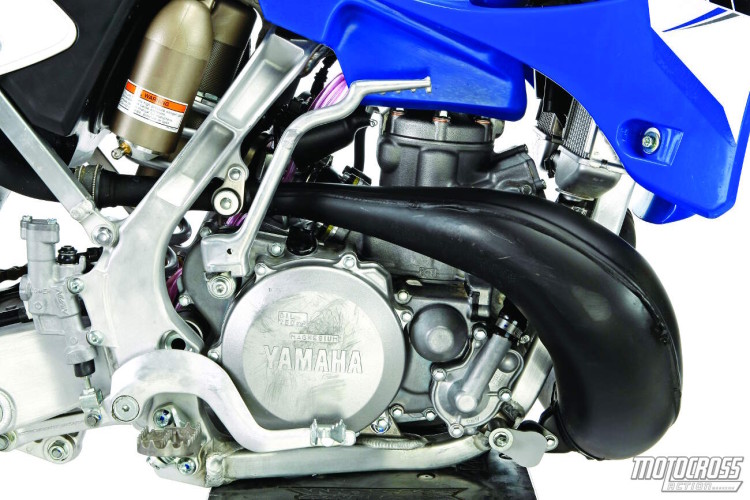

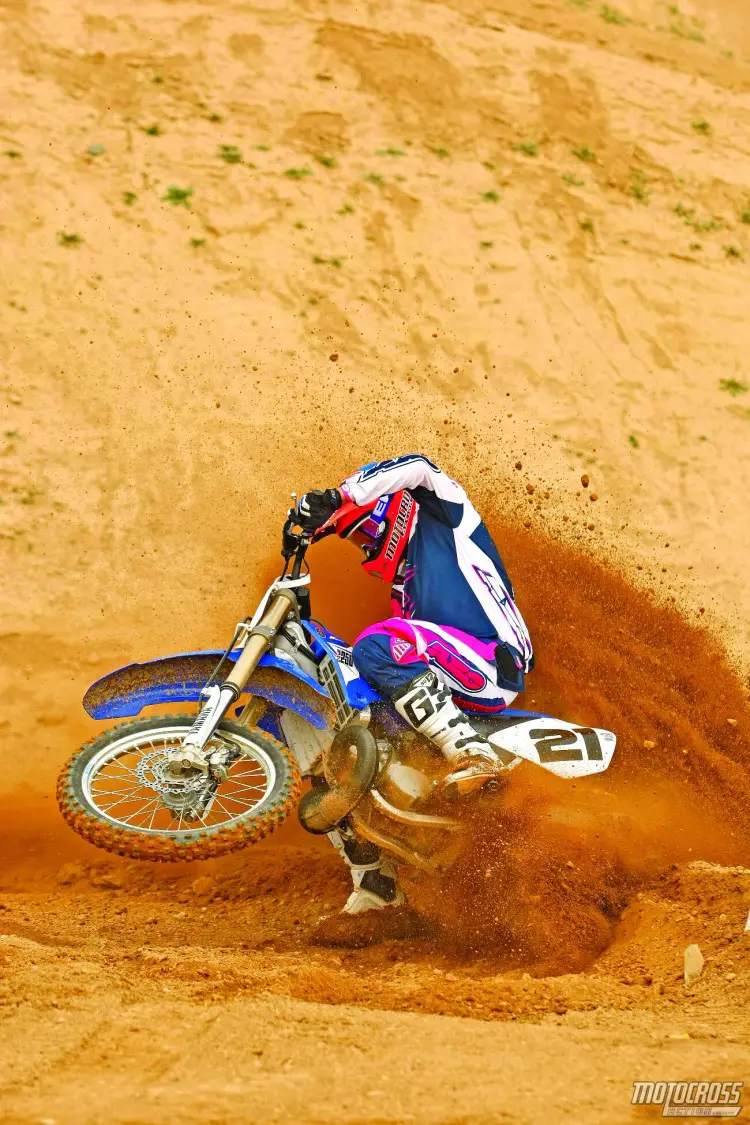
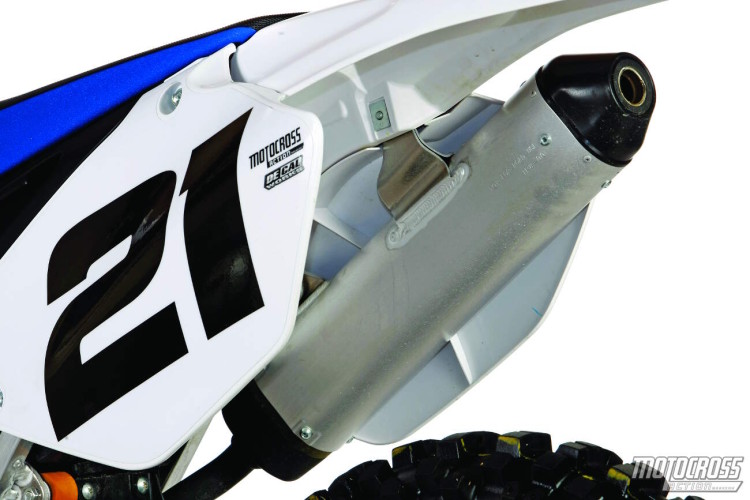
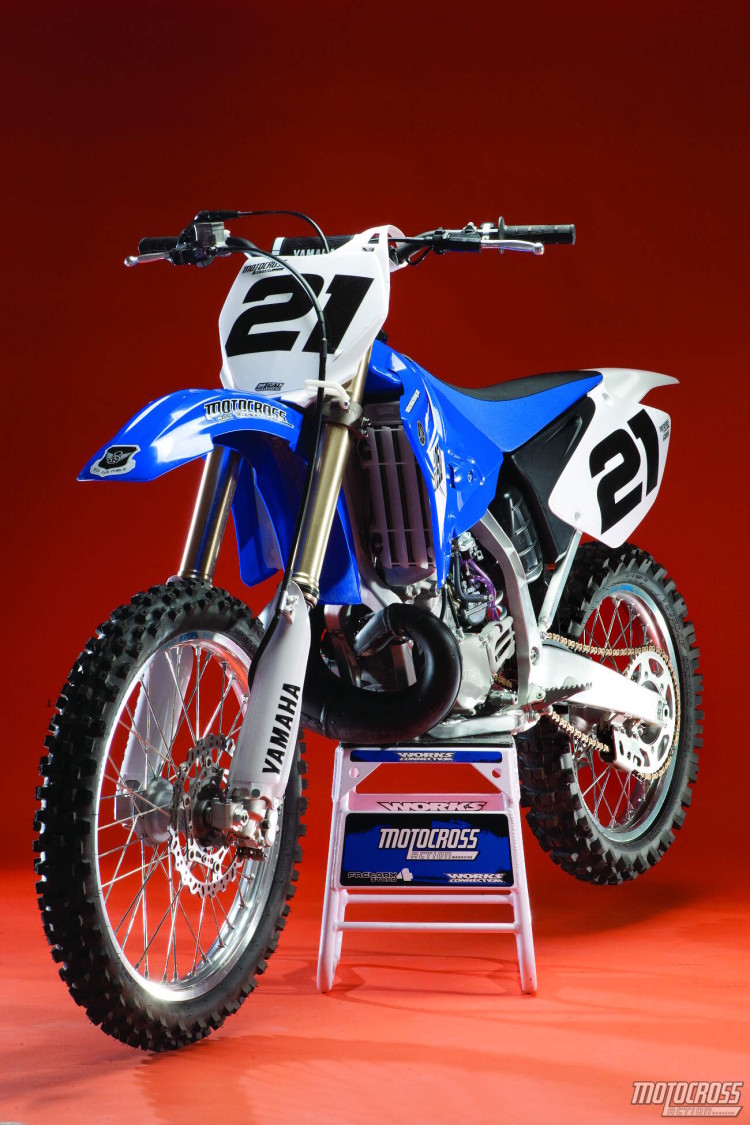

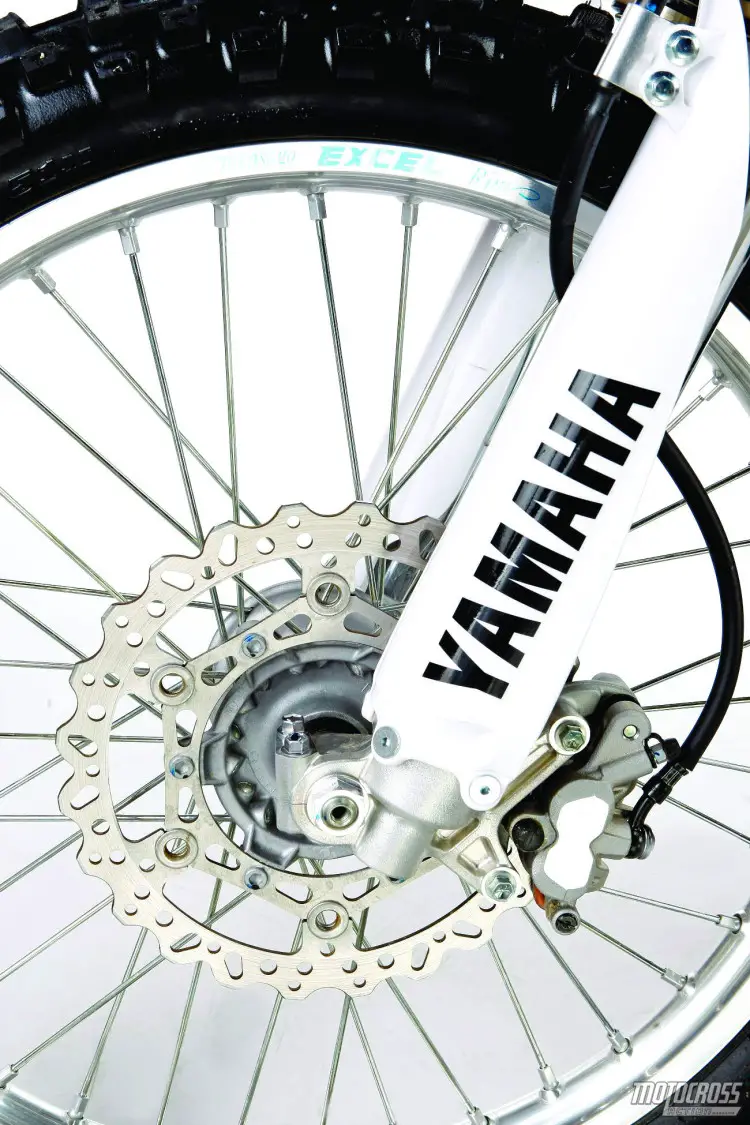
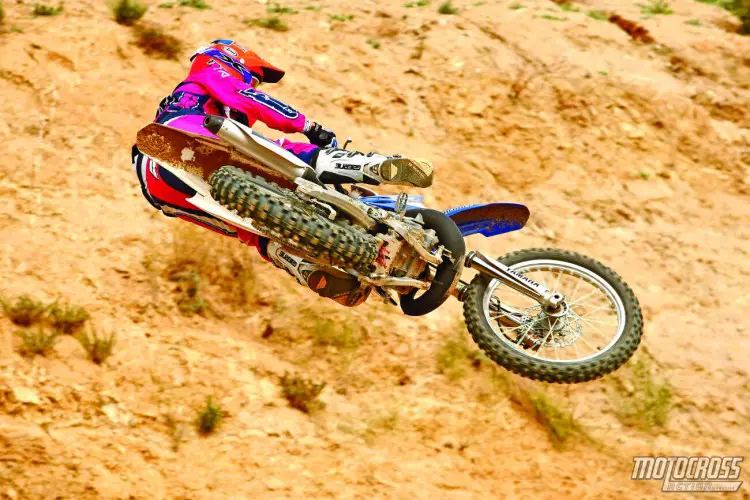




Comments are closed.